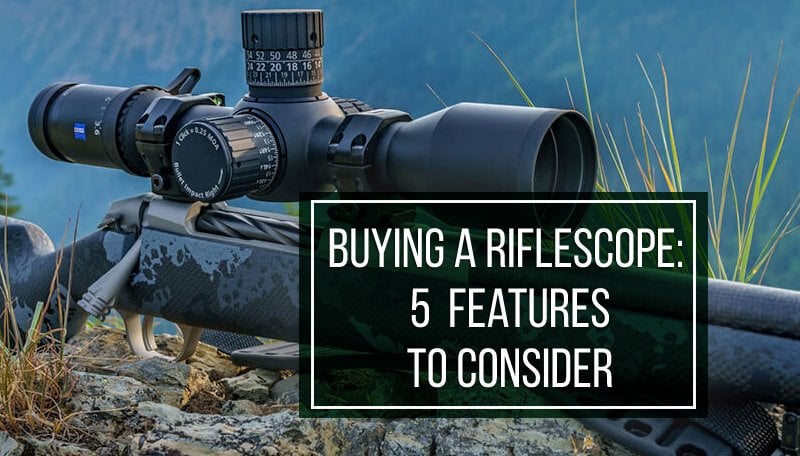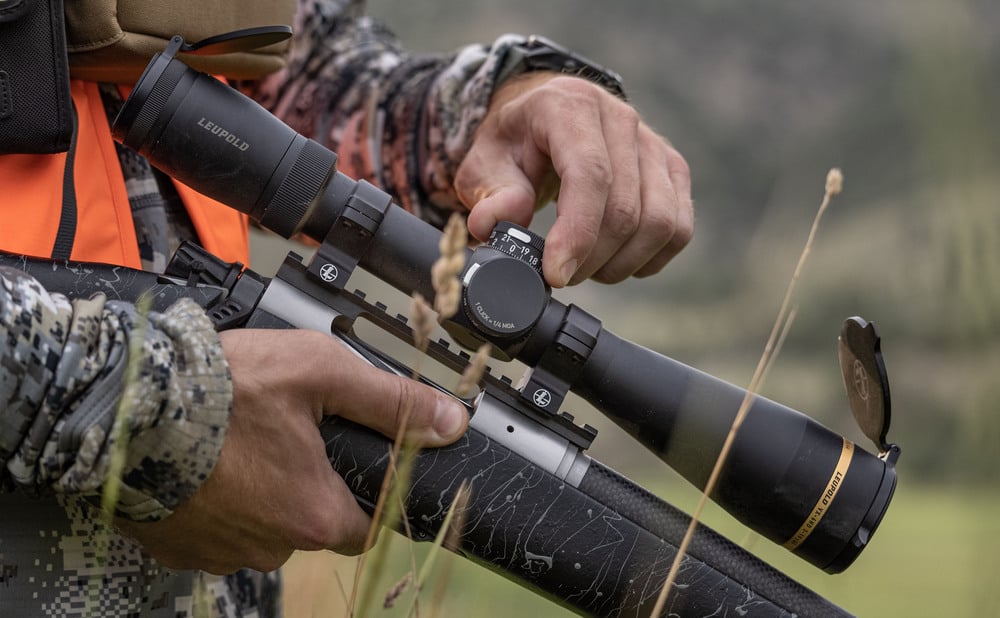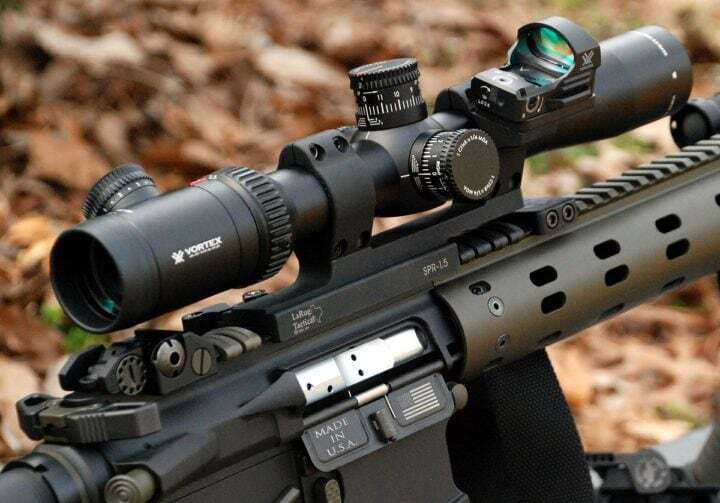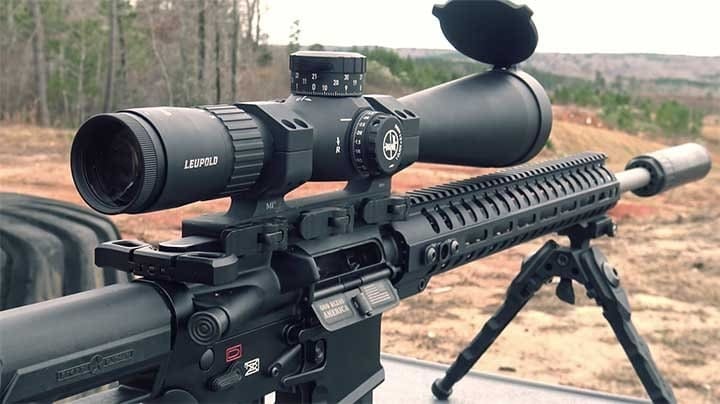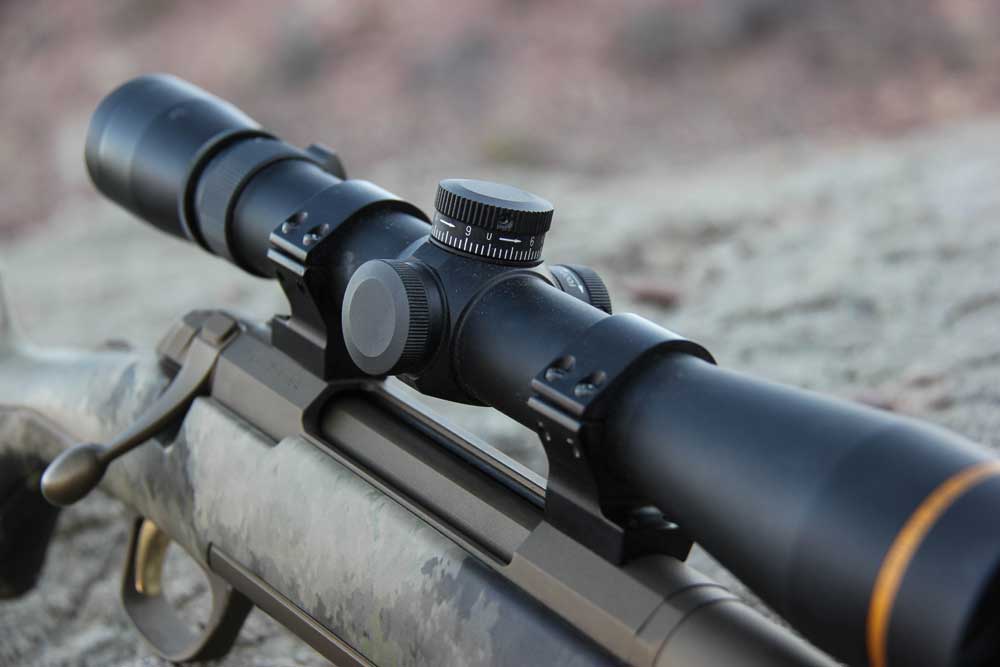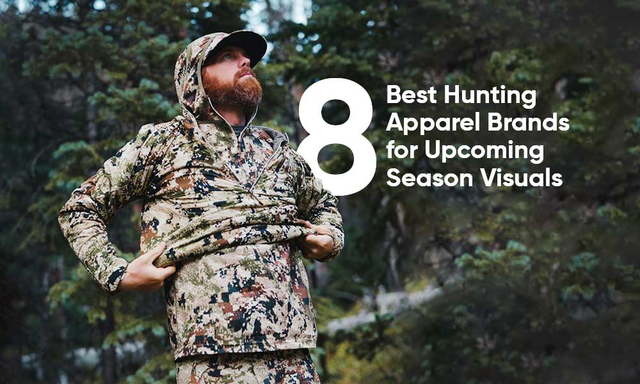Last Updated on
A rifle scope is an essential accessory for any hunter or long-range shooter. It extends our vision and allows us to see things we wouldn’t normally see, be it a game animal prancing amidst distant bushes or a target set somewhere on the horizon. What is even more important, it shows us a precise and detailed image, if chosen and adjusted correctly, that is. When selecting a scope for your rifle, there are several important features you need to consider. In this article, we’ll explore the five key features you should look out for when choosing a rifle scope.
Table of Contents
Introduction
Feature 1: Magnification
Feature 2: Objective Lens Quality & Size
Feature 3: Field of View
Feature 4: Reticles
Feature 5: Durability & Weather Resistance
Conclusion
FAQs
Introduction: What is a Rifle Scope and What Does it do?
A rifle scope is an optical device that attaches to a firearm and is used for aiming. It allows shooters to make precise shots from longer distances – an otherwise impossible feat. In contrast to iron sights, which require the shooter to align two points of reference to work, a rifle scope uses optics – including lenses and prisms – to magnify an image of the particular target.
Rifle scopes come with either variable or fixed power settings. The overwhelming majority of modern rifle scopes feature variable power allowing you to adjust the level of magnification depending on your needs. Many also feature adjustable reticles, or crosshairs, which help you line up with your targets more accurately. Other features like windage and elevation adjustment knobs help make the finest precision changes so that you can get the best point of impact when shooting at longer ranges.
Overall, having a rifle scope is essential if you’re in for increased accuracy when shooting from far away. With its combination of powerful optics and useful features like adjustable reticles, windage and elevation adjustments, they are too good of assistants to pass. It wouldn’t be an overstatement to say that rifle scopes provide shooters with all the necessary tools needed for landing bulls-eye shots. Isn’t that everything a shooter can ask for?
Now that you are better acquainted with the concept of a rifle scope, let’s get down to the features you need to account for when choosing one.
Feature 1: Magnification
Magnification power is understandably the most popular parameter people focus on when choosing a rifle scope. Shooters assume that higher magnification means they’ll see further, which is sort of what we get scopes for. However, it’s important to understand that more isn’t always better – mostly because of the image quality.
The thing is, the high magnification range alone doesn’t ensure the enhanced image you get will be precise and detailed. What it determines is how much the scope can enhance the picture. You may acquire a scope with an upper magnification limit of 36x only to find out you can’t see a thing at maxed power. Besides, the more you zoom in, the more difficult it becomes to keep the image stable. In short, the fact that your scope has high magnification power doesn’t mean you’ll get a clear and crisp image, so high numbers shouldn’t be a priority.
With that being said, it doesn’t mean you should opt for scopes with as little magnification as possible. Different magnification ranges work for different distances – and that’s the factor you should account for. Of course, it’s difficult to predict from which distance you’ll spot an animal, but you don’t need to see its eyelashes to make a shot. There is a classification that people often refer to when classifying scopes according to their magnification range. It’s not official, but quite convenient.
Low-Power rifle scopes feature magnification not exceeding 10x. Mid-Power scopes can show you images at 20x enhancement. Everything above that number (20x+) is considered High-Power optics. The first two types are most suitable for hunters and precision shooters. This is how those numbers convert into yards: 1-4x is good for 100 yards shooting, 5-8x – for 200 yards, and so on. The High-Power scopes are usually used by either extreme long-range shooters or people with declining eyesight.
As you can see, having a lot of power can be beneficial, but too much magnification can end up doing more harm than good. If you want to acquire a scope with a high magnification range, be sure to carefully consider the next feature.
Feature 2: Objective Lens Quality & Size
The quality and size of an objective lens are arguably the most important factors to consider when choosing a rifle scope. The type of glass used in objective lenses is crucial for image fidelity. The high-quality glass will give you a detailed, clear and precise picture. The cheaper alternatives, however, will produce mediocre images.
The objective lens size is another crucial characteristic of a rifle scope, always illustrated in its name. The purpose of the lens is to catch as much light as possible, and bigger lenses tend to perform this task better than smaller ones. However, the price of a rifle scope grows in direct proportion to the size of the objective lens.
As a rule, the higher the rifle scope’s magnification power is, the bigger the objective lens is. That somewhat makes choosing easier since you won’t have an excessively large number of options, but the choice is by no means scarce.
Keep in mind that a big objective lens does come with its drawbacks. In addition to being costly, such lenses make the scope heavier, which might affect your performance. Scopes with big lenses might also be harder to mount since they require wider scope rings.
Overall, if you want optimal performance from your rifle scope – be sure to pay attention to the size and quality of its objective lens. By investing in high-end optics, you’ll benefit from improved accuracy, sharpness and reliable performance during demanding shooting sessions.
Feature 3: Field of View
Field of view (FOV) is another factor worth paying attention to when selecting a rifle scope. A rifle scope’s FOV is determined by the size of its objective lens and its magnification level, so you can call it a combination of the two characteristics we discussed earlier. The FOV determines how wide a view you have through the scope.
Having a wide field of view can be beneficial for several reasons. A wider FOV means you can quickly spot and acquire the target with less effort and movement, meaning faster shots and improved accuracy. Additionally, having a wide field of view enables you to scan a wider area for targets more quickly and easily, potentially allowing for better situational awareness.
As you can guess, the more you zoom in, the narrower your FOV becomes. Wide FOV might not be that important for long-range shooters, but when you are out in the wild, it’s better not to neglect environmental awareness. Things might come at you from unexpected sides at unexpected times, and a wider field of view might prevent that from happening.
Feature 4: Reticles
A rifle scope reticle is the pattern or grid of markings inside a rifle scope used to aim at a target. The design of the reticles varies from one riflescope to another, with some being very basic and others having more complex designs. Some scopes even have illuminated reticles that make it easier to take accurate shots in low-light conditions.
Regardless of other characteristics of your scope, if your reticle isn’t suited to your shooting style and goals, your accuracy is bound to suffer. The type of rifle scope reticle best suited for your purposes depends on many factors, such as desired range and magnification levels as well as environmental conditions like wind speed and lighting level. Some research is due before choosing which type of reticle is right for your situation.
Enumerating all the existing reticle styles requires an article of its own. To give one example, hunters and target shooters may benefit greatly from ballistic reticles with distinctive horizontal lines below the center crosshair, like Mil DOT and MOA-style reticles.
Rifle scope reticles have an important feature called Focal Plane that determines how they perform. As such, there are First Focal Plane reticles and Second Focal Plane reticles.
A First Focal Plane (FFP) reticle remains in proportion to the target at all magnification levels. That means no matter what magnification level you set your scope to, the size of your reticle will remain constant relative to the target.
A Second Focal Plane (SFP) reticle is another type of scope reticle that stays in one place within the scope tube regardless of magnification level. That means that as you increase or decrease your magnification level, the size of the reticle will remain unchanged relative to the target.
Feature 5: Durability & Weather Resistance
The last thing to consider when selecting a rifle scope is its durability and weather resistance. You need to make sure that your scope can handle the abuse of unfavorable weather conditions. Even if you don’t plan to use them outside, it never hurts to have a robust scope.
You can assess the defensive capabilities of your scope by looking at what kind of protection it has from dust and water. Look for features like rubber gaskets and O-rings that protect the lenses from moisture, fogging, or condensation. Additionally, it might be a good idea to check what kind of materials the scope’s body is made of – an aluminum alloy body is usually more durable than one made of plastic.
Finally, pay attention to lens coating. Not only does it reduce glare and increase light transmission but also repels water and dust. Lens coating can also protect against scratches and dirt buildup, making them more resistant to wear and tear over time.
Conclusion
As you can see, there are a variety of features that you need to consider when selecting a rifle scope. From magnification and objective lens size to FFP/SFP reticles and field of view, all these things play an important role in determining the accuracy of your shots and, consequently, your shooting experience. If you base your buying decision on the factors we’ve mentioned, you are sure to find a scope that caters to your personal needs.
Check out our other articles on optics:
- Burris Pistol Scope Review – 2023 Guide
- What are the Best Spotting Scopes for Hunting?
- Five Affordable Spotting Scopes
- How To Choose A Spotting Scope
FAQs
What are the different types of rifle scopes?
The different types of rifle scopes are as follows:
- Fixed Power Scope – This scope has a fixed magnification level and does not allow for any adjustments.
- Variable Power Scope – This scope is adjustable and allows for various levels of magnification.
- Night Vision Scopes – These scopes use night vision technology to allow for shooting in low light or completely dark conditions.
- Thermal Scopes – A different kind of night vision scopes that utilizes the technology of thermal imaging, catching heat waves instead of light.
What factors should be considered when choosing a rifle scope?
The primary factors that need to be considered when choosing a scope are:
- Magnification
- Objective Lens Quality & Size
- Field of View
- Reticle Style
- Durability & Weather Resistance
How does magnification affect accuracy?
Magnification affects accuracy by increasing the level of detail that can be seen. Magnification helps to reduce errors by allowing for a greater level of precision in measurements and observations. However, it is important to remember that magnification does not increase the accuracy directly, but rather allows for a closer examination of details. Therefore, magnification can help improve accuracy, but it is not a substitute for the trained eye.
How do lens coatings affect performance?
Lens coatings can help improve the performance of a lens in a variety of ways. By reducing reflections, they can help reduce ghosting and flare., diminish chromatic aberrations and improve contrast and color rendition. In addition, coatings can help protect the lens from dust and moisture, making it more durable.
